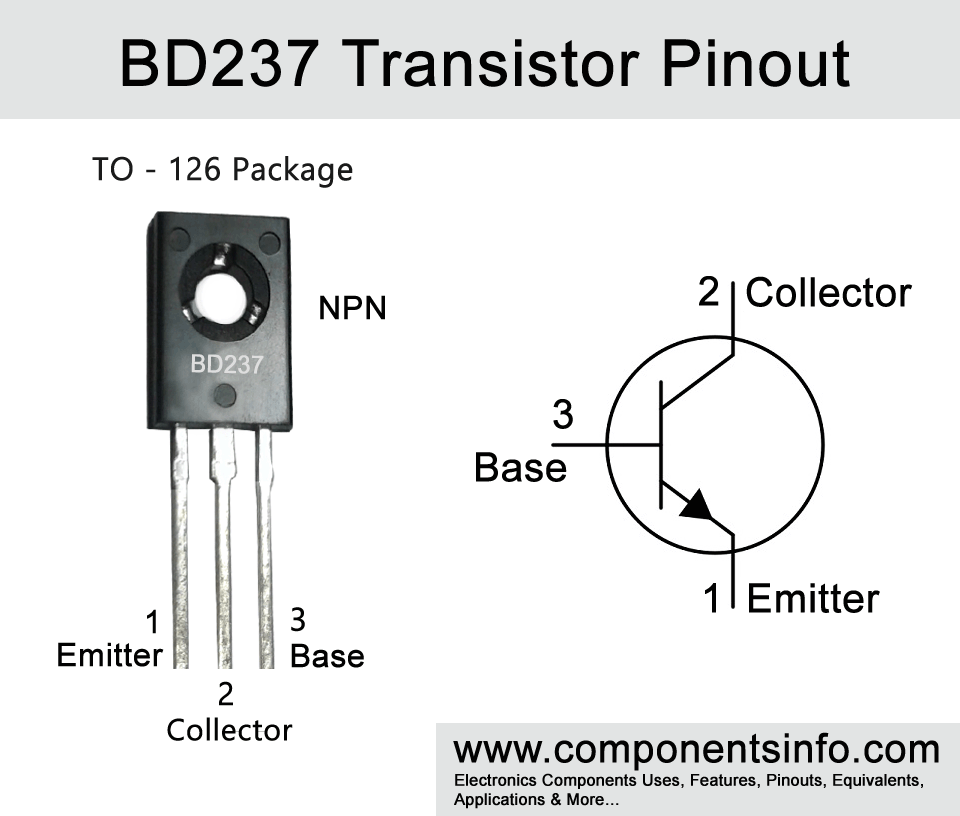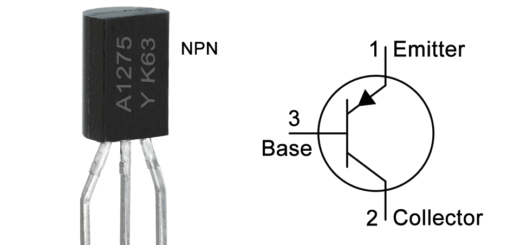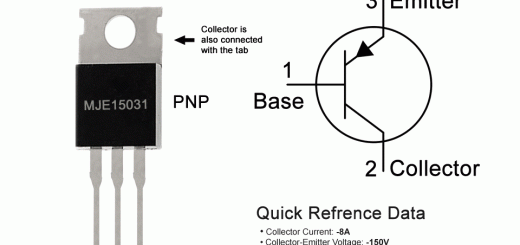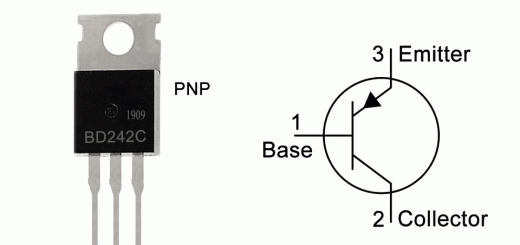BD237 Pinout, Equivalent Transistors, Applications, Features and Other Info
If you are looking for a medium power NPN transistor that has collector current of upto 2A and with max collector to emitter voltage of 80V then BD237 can be a good choice. The post below covers all the important details of the transistor such as its pinout, equivalent transistors, applications, features and other info.
Absolute Maximum Ratings:
- Package Type: TO-126
- Transistor Type: NPN
- Max Collector Current(IC): 2A
- Max Collector-Emitter Voltage (VCEO): 100V
- Max Collector-Base Voltage (VCBO): 100V
- Max Emitter-Base Voltage (VEBO): 5V
- Max Collector Power Dissipation (PC): 25W
- Max Transition Frequency (fT): 3 MHz
- Minimum & Maximum DC Current Gain (hFE): 40
- Max Storage & Operating temperature Should Be: -65 to +150 Centigrade
PNP Complementary:
The PNP complimentary of BD237 is BD238
Replacement and Equivalent:
2SD2155, 2SD2065, 2SD2052, 2SD2029, 2SD1717, 2SD1715, 2SD1713, 2SD1704, 2SD1488, 2SD1486, 2SD1311, 2SD1289, 2SD1018, 2SC2809, MJE802G, MJE270G, MJE243G, MJE241, MJE182G, KSE803, KSE182, BD791, BD779, BD681, BD679, BD441, BD379, BD179, 2SD1725, 2SD1724.
BD442 Transistor Explained / Description:
BD237 is a medium power transistor designed to be used for switching and amplification purposes. It is available in TO-126 package, when looking from the front (part number side) the pinout of the transistor are pin 1 is Emitter, pin 2 is Collector and pin 3 is Base.
BD237 is a transistor of a series which also contains other NPN transistor which are BD233 and BD235. The two other transistors are almost same as BD237 but their collector-emitter voltage, collector-base voltage and collector emitter sustaining voltage are different. But if you are driving a load that require under 35V then you can easily select any one in these three transistor.
There are also complimentary transistor for these transistors which are BD234, BD236 and BD238.
Now looking at the absolute maximum ratings of BD237 the max collector-emitter voltage 80V, the maximum collector-base voltage is 100V, max collector current is 2A DC, max emitter-base voltage is 5V and max collector dissipation is 25W.
The transition frequency of the transistor is 3MHz, collector-emitter saturation voltage is 0.6V and DC current gain is 40.
Where We Can Use it & How to Use:
BD237 is designed to use in amplifier and switching applications but can also purposes such as inverter, control and driver circuits, voltage amplifications, signal amplifications, power management circuits etc. The detailed list of its applications can be found below under the applications heading.
The using procedure of the transistor is similar to any other BJT transistor we use.
Applications:
Battery charger circuits
Audio Amplifiers
DC to AC Converters
Power converter circuits
Battery discharging circuits
Dimmers
LED Drivers
Motor drivers and controllers
Inverter Circuits
PWM controllers
Switching Circuits
LED Drivers
Relay drivers circuits
Motor Drivers
Temperature Control Circuits
Solar Circuits
Variety of General Purpose Applications
Safe Operating Guidelines:
Here are the safe operating guidelines for the transistor.
- To safely operate the transistor do not drive the transistor to its absolute maximum ratings and always stay atleat 20% below from these max ratings.
- So according to above guideline we can see the absolute maximum ratings of the transistor collector current is 2A so therefore we do not drive load of more than 1.6A.
- Moreover the maximum collector to emitter voltage is 80V, so we do not drive load of more than 64V.
- The surrounding and inside temperature of the transistor should be between -55°C to 150°C.
Datasheet:
To download the datasheet just copy and paste the below link in your browser.
https://datasheetspdf.com/pdf-down/B/D/2/BD237_FairchildSemiconductor.pdf



